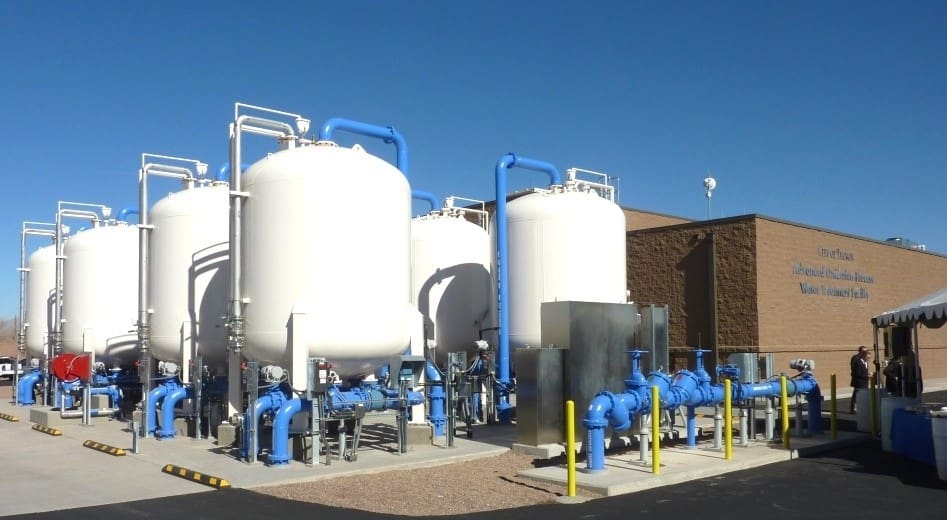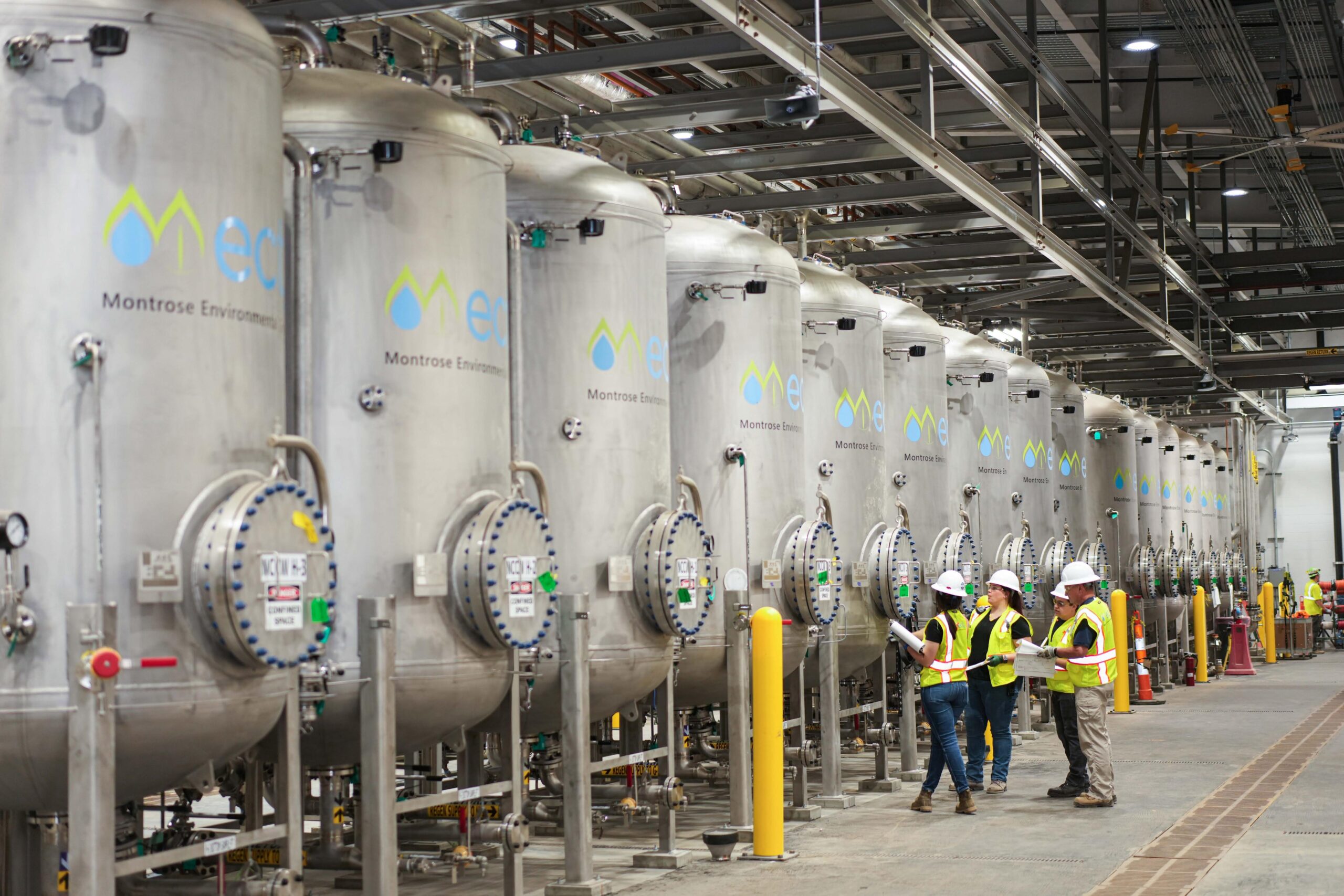Advanced Approaches for Efficient PFAS Contamination Elimination
The consistent obstacle of PFAS contamination demands the exploration of sophisticated elimination approaches that can successfully address these harmful compounds. Ingenious modern technologies, such as innovative oxidation processes and numerous adsorption strategies, have become appealing remedies in mitigating PFAS from influenced settings. The role of regulative frameworks in shaping these technologies can not be overlooked, as they dictate the rate and instructions of removal efforts. As we evaluate these sophisticated techniques, it becomes vital to examine their useful applications and the broader implications for ecological health and policy.
Recognizing PFAS Properties
Although per- and polyfluoroalkyl substances (PFAS) have been commonly utilized in different industrial and customer products due to their one-of-a-kind buildings, their determination in the setting positions substantial challenges to public wellness and safety. PFAS are a team of artificial chemicals defined by a carbon-fluorine bond, among the strongest chemical bonds known, which adds to their outstanding stability and resistance to degradation. This security enables PFAS to build up in the environment and living organisms, leading to prospective unfavorable wellness effects.
The hydrophobic and oleophobic nature of PFAS makes them especially effective in applications such as non-stick coverings, stain-resistant textiles, and firefighting foams. These same residential properties add to their ecological determination, as PFAS do not easily damage down via all-natural processes. Their extensive usage has led to ubiquitous contamination of water sources and dirts, complicating remediation initiatives. Comprehending the chemical residential or commercial properties of PFAS is essential for developing reliable strategies to manage and reduce their ecological impact. The unique features of these substances necessitate a nuanced approach to attend to the difficulties postured by their visibility in ecological communities and potential human direct exposure.
Innovative Remediation Technologies
The persistence of PFAS in the atmosphere has actually spurred the advancement of cutting-edge remediation modern technologies intended at successfully getting rid of these impurities from impacted ecosystems. Among the most promising methods are sophisticated oxidation processes (AOPs), which utilize powerful oxidants to break down PFAS compounds right into less harmful substances. AOPs can be customized to target specific PFAS structures, enhancing their effectiveness.
One more emerging innovation is the use of adsorption media, such as triggered carbon and ion exchange resins, which can uniquely capture PFAS from contaminated water. These materials have shown considerable removal efficiencies, although regular substitute and regeneration are necessary to preserve efficiency.
Membrane filtering methods, including reverse osmosis and nanofiltration, are also getting traction in PFAS remediation. These approaches can efficiently separate PFAS from water, offering a sensible solution for treating polluted sources. Furthermore, thermal therapy techniques, such as incineration, can disintegrate PFAS right into non-toxic by-products, though they call for careful monitoring to control exhausts.
Collectively, these cutting-edge removal modern technologies represent significant innovations in the continuous fight versus PFAS contamination, using numerous strategies to bring back get more damaged atmospheres and shield public wellness.

Bioremediation Strategies
Bioremediation see it here strategies supply a promising method to addressing PFAS contamination by utilizing the natural capacities of bacteria to degrade these relentless compounds (m270 waste management). This approach involves the use of bacteria, fungis, and various other germs that can metabolize or change PFAS substances into less dangerous byproducts
Recent innovations in molecular biology and environmental microbiology have actually enhanced our understanding of microbial communities and their potential functions in PFAS degradation. Scientists are proactively checking out particular pressures of germs, such as Pseudomonas and Bacillus, which have actually demonstrated the ability to break down specific PFAS compounds.
In situ bioremediation methods, where microbes are promoted straight in contaminated environments, can be particularly reliable. This method usually involves the application of nutrients or electron benefactors to advertise microbial development and task. Furthermore, ex situ approaches, such as bioreactors, permit regulated problems that can maximize deterioration rates.
Despite the pledge of bioremediation, obstacles remain, including the complex nature of PFAS compounds and the requirement for substantial field screening - m270 waste management. Continued r & d will be essential to refine these techniques and assess their efficiency in varied ecological contexts
Adsorption and Filtration Approaches
Attending to PFAS contamination frequently entails using adsorption and purification approaches, which are created to remove these relentless chemicals from water and soil. Amongst the various techniques, turned on carbon adsorption is widely made use of because of its high area and porosity, making it possible for reliable capturing of PFAS molecules. Granular activated carbon (GAC) systems are specifically preferred for treating large quantities of infected water, while powdered triggered carbon (PAC) can be utilized for smaller-scale applications.
Ion exchange materials likewise show guarantee in PFAS removal, operating by trading PFAS ions with much less harmful ions in the water. This method has actually shown efficiency in concentrating PFAS compounds, promoting their subsequent removal. Additionally, membrane filtration strategies, such as reverse osmosis and nanofiltration, his comment is here run by utilizing semi-permeable membrane layers to different PFAS from water, successfully minimizing their concentrations.
While these techniques are efficient, they should be meticulously picked based on the particular PFAS substances existing and the environmental context. Constant developments in products scientific research and engineering are causing the development of novel adsorbents and filtration systems that improve removal effectiveness and reduce functional costs, thus enhancing general removal efforts.
Regulatory and Plan Factors To Consider
Exactly how can effective regulative structures boost the monitoring of PFAS contamination? Extensive policies are vital to guarantee a collaborated and robust response to the challenges presented by per- and polyfluoroalkyl materials (PFAS) Rules can develop clear standards for surveillance, reporting, and remediating PFAS-contaminated sites, fostering liability among industries and public entities. (m270 waste management)

On top of that, economic motivations and grants can be integrated into plans to encourage the fostering of advanced remediation technologies. Policymakers need to additionally focus on r & d, guaranteeing that arising techniques for PFAS elimination are verified and carried out successfully.
In addition, public understanding and interaction are vital components of any type of governing strategy, empowering neighborhoods to advocate for their wellness and security. Inevitably, a well-structured regulatory setting will certainly not only enhance the administration of PFAS contamination but likewise promote lasting practices that protect future generations.
Verdict
In recap, the complexity of PFAS contamination requires the adoption of innovative remediation approaches. Innovative innovations such as sophisticated oxidation procedures, adsorption strategies, and membrane layer filtration have actually shown considerable effectiveness in removing these relentless compounds from infected water sources. Furthermore, regulative frameworks should advance to support the execution of these innovations, making certain risk-free and efficient monitoring of PFAS contaminants. Continued r & d in this area stay important to attending to the challenges positioned by PFAS contamination.